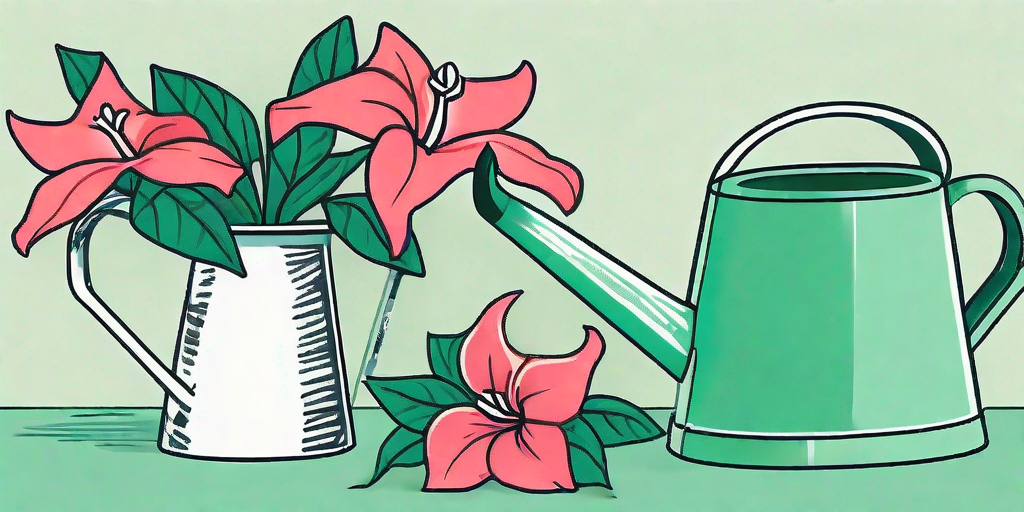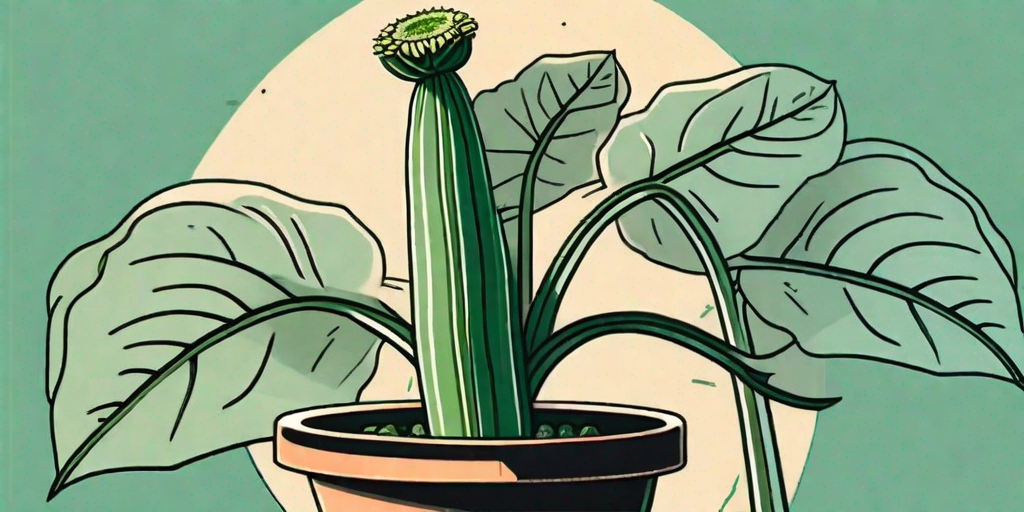
If you're looking for a way to add a touch of tropical flair to your garden, look no further than the Mandevilla. This stunning flower, with its vibrant colors and lush foliage, is sure to turn heads and make your garden the envy of the neighborhood. But how do you grow and care for this exotic beauty? Well, buckle up, because we're about to embark on a horticultural adventure!
Understanding the Mandevilla
Before we dive into the nitty-gritty of Mandevilla care, let's take a moment to appreciate this plant's unique characteristics. The Mandevilla, also known as the Brazilian jasmine, is a climbing vine native to Central and South America. It's known for its trumpet-shaped flowers, which come in a variety of colors including pink, red, and white. But don't let its delicate appearance fool you - this plant is a hardy survivor, capable of withstanding a variety of conditions.
There are several species of Mandevilla, each with its own unique characteristics. Some are compact and bushy, while others are sprawling climbers. Some species have glossy, evergreen leaves, while others shed their leaves in the fall. Regardless of the species, all Mandevillas share a love for warm, sunny climates and a disdain for frosty temperatures. So, if you live in a colder region, you might want to consider growing your Mandevilla in a pot, so you can bring it indoors during the winter.
Planting Your Mandevilla
Now that we've covered the basics, let's get down to business. Planting a Mandevilla isn't rocket science, but there are a few key steps to ensure your plant thrives.
First, choose a location with plenty of sunlight. Mandevillas love the sun, but they also appreciate a bit of afternoon shade. Next, ensure the soil is well-draining. Mandevillas don't like to have wet feet, so avoid heavy, clay soils. Instead, opt for a light, sandy soil enriched with organic matter.
When it comes to planting, dig a hole twice as wide and just as deep as the root ball. Place the plant in the hole, making sure the top of the root ball is level with the soil surface. Backfill with soil, firm it gently around the base of the plant, and water thoroughly.
Caring for Your Mandevilla
Watering
Mandevillas prefer a 'drink and dry' approach to watering. This means you should water your plant thoroughly, then allow the soil to dry out before watering again. Overwatering can lead to root rot, which is a surefire way to send your Mandevilla to an early grave. So, when in doubt, it's better to underwater than overwater.
Feeding
Like any plant, Mandevillas appreciate a good meal. Feed your plant with a balanced, slow-release fertilizer every two weeks during the growing season. This will provide the nutrients your Mandevilla needs to produce those stunning blooms.
Pruning
Don't be afraid to give your Mandevilla a good trim. Pruning helps to maintain the shape of the plant and encourages bushier growth. Plus, it gives you the chance to show off your topiary skills to the neighbors!
Common Problems and Solutions
Despite their hardy nature, Mandevillas can sometimes fall prey to pests and diseases. Common problems include aphids, whiteflies, and spider mites. If you notice any of these critters on your plant, treat with an insecticidal soap or neem oil.
Mandevillas can also suffer from fungal diseases, such as powdery mildew and leaf spot. To prevent these issues, ensure your plant has good air circulation and avoid watering the leaves. If your plant does become infected, treat with a fungicide.
Frequently Asked Questions
- Can I grow a Mandevilla indoors? Yes, you can! Just make sure to provide plenty of light and keep the temperature above 60 degrees Fahrenheit.
- How often should I water my Mandevilla? Water your Mandevilla when the top inch of soil is dry. Remember, it's better to underwater than overwater.
- Why are the leaves on my Mandevilla turning yellow? Yellow leaves can be a sign of overwatering or a nutrient deficiency. Check your watering schedule and consider feeding your plant with a balanced fertilizer.
And there you have it - everything you need to know to grow and care for a Mandevilla. So, what are you waiting for? It's time to unleash the beauty of this stunning flower in your garden!















